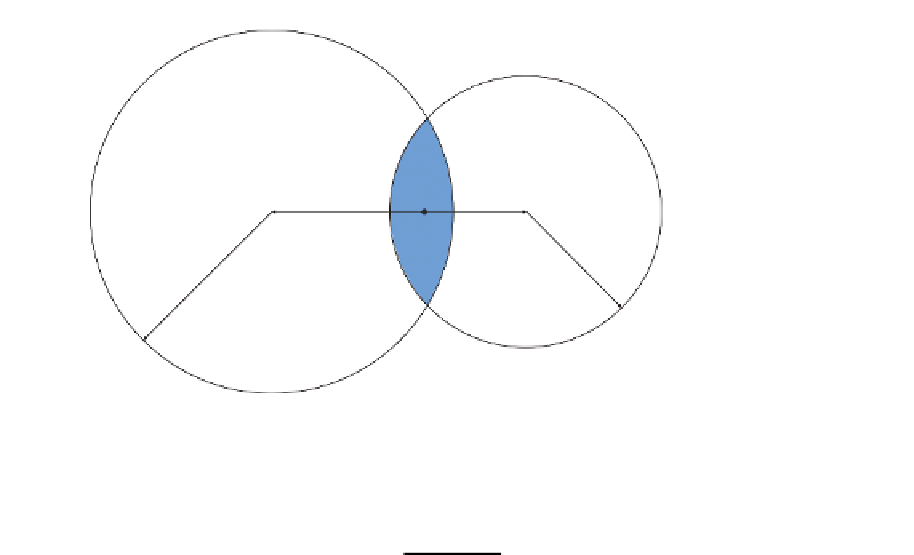Graphics Reference
In-Depth Information
c
D
0
D
1
c
0
c
1
r
1
r
0
Figure 1.16.
Finding area and center of intersection of disks.
The geometric center of intersection (if intersection exists) is given by
c
0)
r
0
+0
.
5
.
r
1
2
c
0
− c
1
−
c
D
0
D
1
=
c
0+(
c
1
−
(1.22)
Both equations (1.21) and (1.22) simplify under the assumption that
c
0isat
(0
,
0)
.
In the case of a rectangle-disk intersection, we treat the disk as a square
adjusted to have the same area as the original disk. Therefore, we can resort
to simple axis-aligned rectangle-rectangle intersection mathematics.
A
R
0
R
1
and
c
R
0
R
1
are given by
tl
=max
c
0
,
d
0
2
,c
1
d
1
2
−
−
br
=min
c
0+
d
0
,
(1.23)
2
,c
1+
d
1
2
A
R
0
R
1
=max(
tl.x
−
br.x,
0)max(
tl.y
−
br.y,
0)
,
c
R
0
R
1
=
tl
+
br
2
,
where
c
0,
d
0,
c
1, and
d
1 are the center points and dimensions of rectangles
R
0
and
R
1, respectively, and
tl
and
br
are top left and bottom right intersection
corners, respectively (assuming Euclidian space with inverse
y
; see Figure 1.17).
It is worth noting that accurate results can only be achieved for models based
on radially symmetrical PDFs. If we strip away the projection part, by substi-
tuting the projected ellipse with a disk during our intersection tests and further














